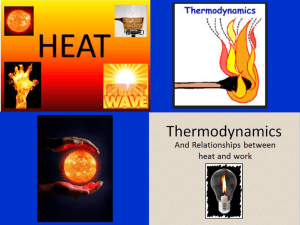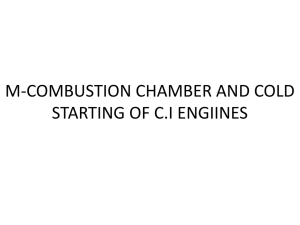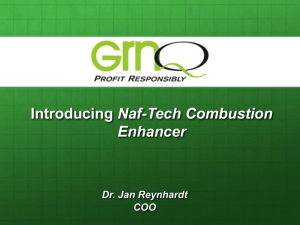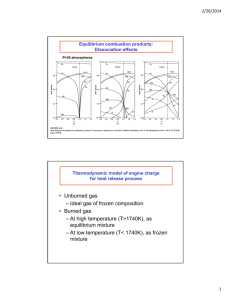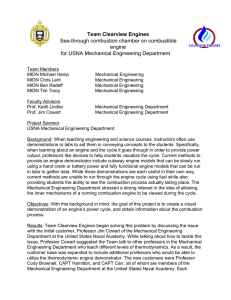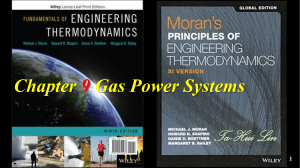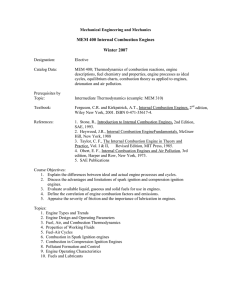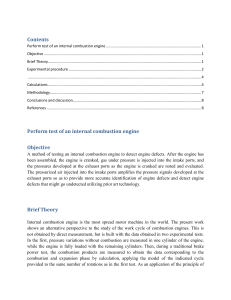Sathyabama University B.E
advertisement
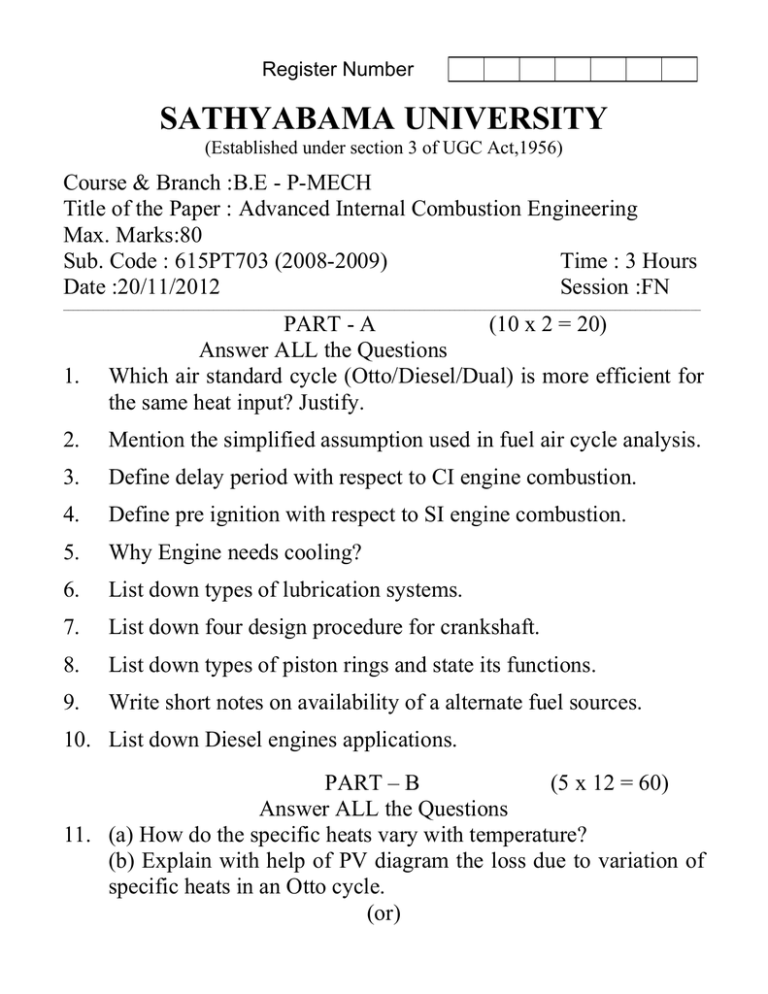
Register Number SATHYABAMA UNIVERSITY (Established under section 3 of UGC Act,1956) Course & Branch :B.E - P-MECH Title of the Paper : Advanced Internal Combustion Engineering Max. Marks:80 Sub. Code : 615PT703 (2008-2009) Time : 3 Hours Date :20/11/2012 Session :FN _______________________________________________________________________________________________________________________________ 1. PART - A (10 x 2 = 20) Answer ALL the Questions Which air standard cycle (Otto/Diesel/Dual) is more efficient for the same heat input? Justify. 2. Mention the simplified assumption used in fuel air cycle analysis. 3. Define delay period with respect to CI engine combustion. 4. Define pre ignition with respect to SI engine combustion. 5. Why Engine needs cooling? 6. List down types of lubrication systems. 7. List down four design procedure for crankshaft. 8. List down types of piston rings and state its functions. 9. Write short notes on availability of a alternate fuel sources. 10. List down Diesel engines applications. PART – B (5 x 12 = 60) Answer ALL the Questions 11. (a) How do the specific heats vary with temperature? (b) Explain with help of PV diagram the loss due to variation of specific heats in an Otto cycle. (or) 12. The air fuel ratio of diesel engine is 31:1. If the compression ratio is 15:1 and the temperature at the end of compression is 1000K, find at what percentage of stroke is the combustion complete if the combustion begins at TDC and continuous at constant pressure. Calorific value of fuel is 40000 kJ/kg. Assume the variable specific heat Cp = 1 + 0.28 x 10-4 T where T is in Kelvin. 13. Bring out clearly the process of combustion in CI engine and also explain the various stages of combustion. (or) 14. (a) What is meant by DI combustion chamber? (b) Explain the any two types of combustion chambers. 15. A six cylinder, gasoline engine operates on the four stroke cycle. The bore of each cylinder is 80 mm and stroke 100mm. The clearance volume per cylinder is 70 3cc. At a speed of 4000 rpm, the fuel consumption is 20 kg/h and the torque developed is 150 Nm. Calculate (a) Brake power (b) The brake mean effective pressure (c) Brake thermal efficiency if the calorific value of the fuel is 43000 kJ/kg and (d) The relative efficiency on brake power basis assuming the engine works on the constant volume cycle. Assume y = 1.4 for air (or) 16. Schematically explain the use of the study of heat balance of an engine. 17. Briefly Explain design considerations for a connecting rod. (or) 18. Briefly explain the function of (a) Inlet valves (b) Exhaust Valves (c) Cylinder lines 19. Compare LPG and petrol as fuel for SI engines. (or) 20. Briefly explain Wankel Rotary Engines.
